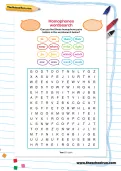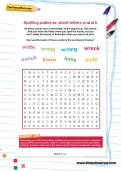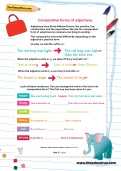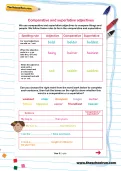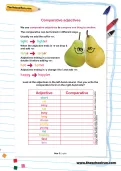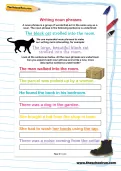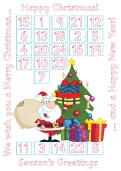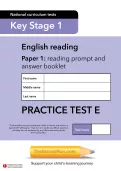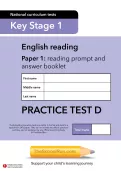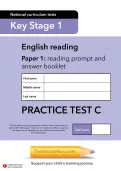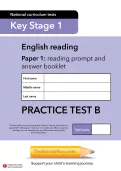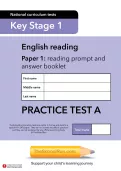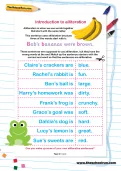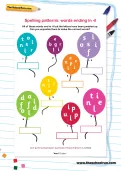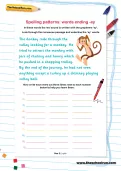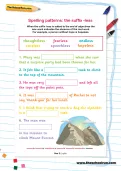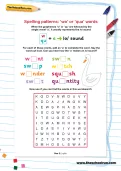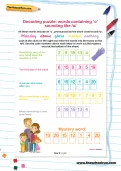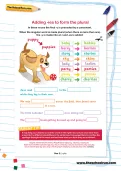Adjectives have three different forms: the positive, the comparative and the superlative. We use the comparative form of adjectives to to compare one thing to another. The comparative is formed differently depending on the adjective’s positive form. Look at these sentences. Can you change the word in the box to its comparative form?
or
Register to add to your saved resources
Already a subscriber? to view this content.
We use comparative and superlative adjectives to compare things and people. Can you choose the right word from the word bank to complete each sentence, then tick the boxes on the right to show whether this word is a comparative or a superlative?
or
Register to add to your saved resources
Already a subscriber? to view this content.
We use comparative adjectives to compare one thing to another. Look at the adjectives in the left-hand column. Can you write the comparative form on the right-hand side?
or
Register to add to your saved resources
Already a subscriber? to view this content.
A noun phrase is a group of words that act in the same way as a noun. Look at these sentences. All the noun phrases are underlined. Can you expand each noun phrase and write a new, more
descriptive sentence underneath?
or
Register to add to your saved resources
Already a subscriber? to view this content.
A handwriting, art and festive activity rolled into one: a picture Advent calendar for KS1 children to fill in and make in the run-up to Christmas.
or
Register to add to your saved resources
Look through our new-style KS1 SATs practice papers to familiarise your child with the new Y2 assessments format. Written by primary-school teachers exclusively for TheSchoolRun subscribers.
or
Register to add to your saved resources
Already a subscriber? to view this content.
KS1 SATs practice papers for English, written in the style of the new-curriculum tests and available exclusively to TheSchoolRun subscribers.
or
Register to add to your saved resources
Already a subscriber? to view this content.
The Year 2 assessments will follow a new-curriculum format. TheSchoolRun's practice papers, available exclusively to subscribers, are presented in the new format to offer at-home practice opportunities for children at the end of KS1.
or
Register to add to your saved resources
Already a subscriber? to view this content.
New-style practice SATs papers, available exclusively to TheSchoolRun subscribers to help children practise reading comprehension, spelling and grammar in the run-up to the May Y2 assessments.
or
Register to add to your saved resources
Already a subscriber? to view this content.
Help your child get used to the new KS1 SATs format with our English practice papers, exclusive to TheSchoolRun subscribers. Each practice paper includes reading comprehension papers, a spelling test and a grammar test, as well as answers.
or
Register to add to your saved resources
Already a subscriber? to view this content.
Alliteration is when we use words together that start with the same letter. These sentences are supposed to use alliteration, but they have the wrong words at the end! Match up the sentence starters with the
correct end word so that the sentences are alliterative.
or
Register to add to your saved resources
Already a subscriber? to view this content.
Can you write the numbers 1 to 10 in your best handwriting?
or
Register to add to your saved resources
Already a subscriber? to view this content.
Use our free phonics phases sound mats to see what sounds your child will be taught when in their phonics learning journey. These mats cover phonics phases 2-5.
or
Register to add to your saved resources
All of these words end in -il but the letters have been jumbled up. Can you unjumble them to make the correct words?
or
Register to add to your saved resources
Already a subscriber? to view this content.
In these words the /ee/ sound is written with the grapheme ‘ey’. Look through this nonsense passage and underline the ‘ey’ words. Then write each word out three times to help you learn them
or
Register to add to your saved resources
Already a subscriber? to view this content.
When the suffix -less is added to the end of adjectives the new word indicates the absence of the root word. For example, a person without hope is hopeless. Fill the correct word in these sentences.
or
Register to add to your saved resources
Already a subscriber? to view this content.
When the graphemes ‘w’ or ‘qu’ are followed by the single vowel ‘a’, it usually represents the /o/ sound as in swan. For each of these words, add an ‘a’ to complete the word. Say the
word out loud. Can you hear how the ‘a’ makes an /o/ sound? Then have a go at the wordsearch.
or
Register to add to your saved resources
Already a subscriber? to view this content.
The letter ‘w’ followed by the ‘or’ grapheme makes the /er/ sound as in worm. Can you work out where these words should go in these sentences?
or
Register to add to your saved resources
Already a subscriber? to view this content.
This list of words include an ‘o’, pronounced as the short vowel sound /u/. Look at the clues on the right and enter the words into the boxes on the left. Use the code numbers above each letter to work out the mystery word at the bottom of the sheet.
or
Register to add to your saved resources
Already a subscriber? to view this content.
In these nouns the final -y is preceded by a consonant. When the singular word is made plural (when there is more than one) the -y is made into an i and -es is added. Can you complete these sentences?
or
Register to add to your saved resources
Already a subscriber? to view this content.
